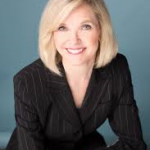 by Jill Griffin
by Jill Griffin
I was at dinner recently with some friends and out of the blue, one of my dinner companions asked a compelling question: If something dangerous happened here in this restaurant, who do you think would step up and lead us out of here to safety?
Companies all across the globe are asking a similar question every day. If we want to go somewhere, if we want to be successful, who can we count on to step up and take us there? An endless stream of studies have been conducted, libraries of books have been written, and yet leadership still seems to be a bit of a mystery.
Can leadership be taught or is it a talent we are born with? Most companies have some kind of assessment that you have to pass to be moved into leadership. That seems democratic — anybody can take the test and so that means theoretically that anybody could pass it. This avoids the good old boy network— no more getting the job because of who you know. At least in theory, that’s how it works. And the chances of finding the right person should be better with some science sprinkled into the process.
But what do these assessments find? What are they looking for? Are they ever wrong? Do men fare better than women or vice versa? Is using an assessment better than just getting to know someone on a personal basis and finding out in the heat of battle who they are and how they operate?
I am not sure, but I can say this: I’ve been a board member on a NYSE company since 2003. I have met many leaders of all sizes, shapes and genders. Some are quiet, some are outspoken. Some are tender, and some are kind of hard-bitten. They are all, in their own way, terrific leaders. So what does that mean?
I think it means that people are much more complicated than we sometimes give them credit for. It’s easy in a laboratory to create a leadership template, an eye of a needle of sorts for only the “right” people to pass through. But in practice it’s more difficult to predict who will step up and do the leading.
This is the crux of what leadership is all about: the willingness and ability to do it in the first place. Some people don’t want that responsibility. But they should, shouldn’t they? After all, who doesn’t want to be in charge?
Think about great salespeople. They love the chase. Closing the deal is everything and they are relentless in getting that done. So what do we do with a great salesperson? We promote them to sales manager! And then sometimes, they do the job for a while out of some obligation or because the money is good or because they are tired of the road. But eventually, who they are at their core and how they are really wired drives them back to what they really love— selling. They could care less about leading people, about hearing their issues on a daily basis and inspiring them to be their best. Not a great fit. But still, it happens all the time in organizations big and small. It is assumed, without evidence, that people can lead, simply because they did well in their previous role.
Real leaders rise and identify themselves. If you want to find the next generation of leaders in your organization, build a culture where they can soar.?? Let them learn and grow. Encourage their input and ideas. Pay close attention. Listen and watch them. If real leaders are given space and license to better themselves and those around them, they will. They can’t help it. That’s what leaders do.
Share information in your company. Don’t hoard it. Build a system that asks for input and ideas, and really do something with all of it when you get it. You’ll see that the latent leaders in your organization will start to flourish in that environment, and they will become increasingly visible.
And get ready because some of those leaders that rise up might surprise you. They don’t fit the mold. They don’t look like you. They don’t dress like you. They think differently. They work differently. But make no mistake, they share your aspirations and your expectations for a job well done.
Jill Griffin is an independent public board director, Harvard “Working Knowledge” author; and founder of Jill Griffin Executive Learning
Source: Forbes



